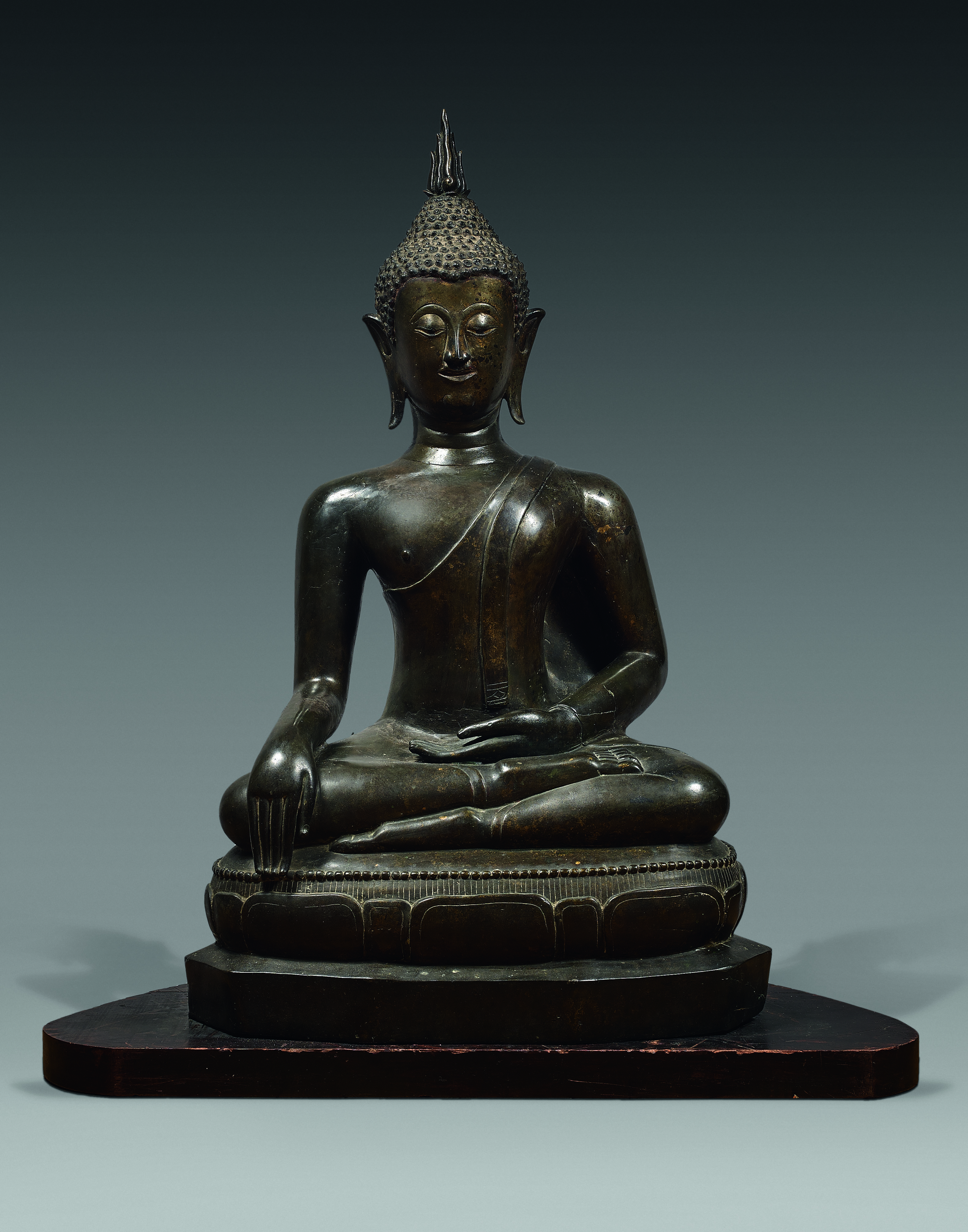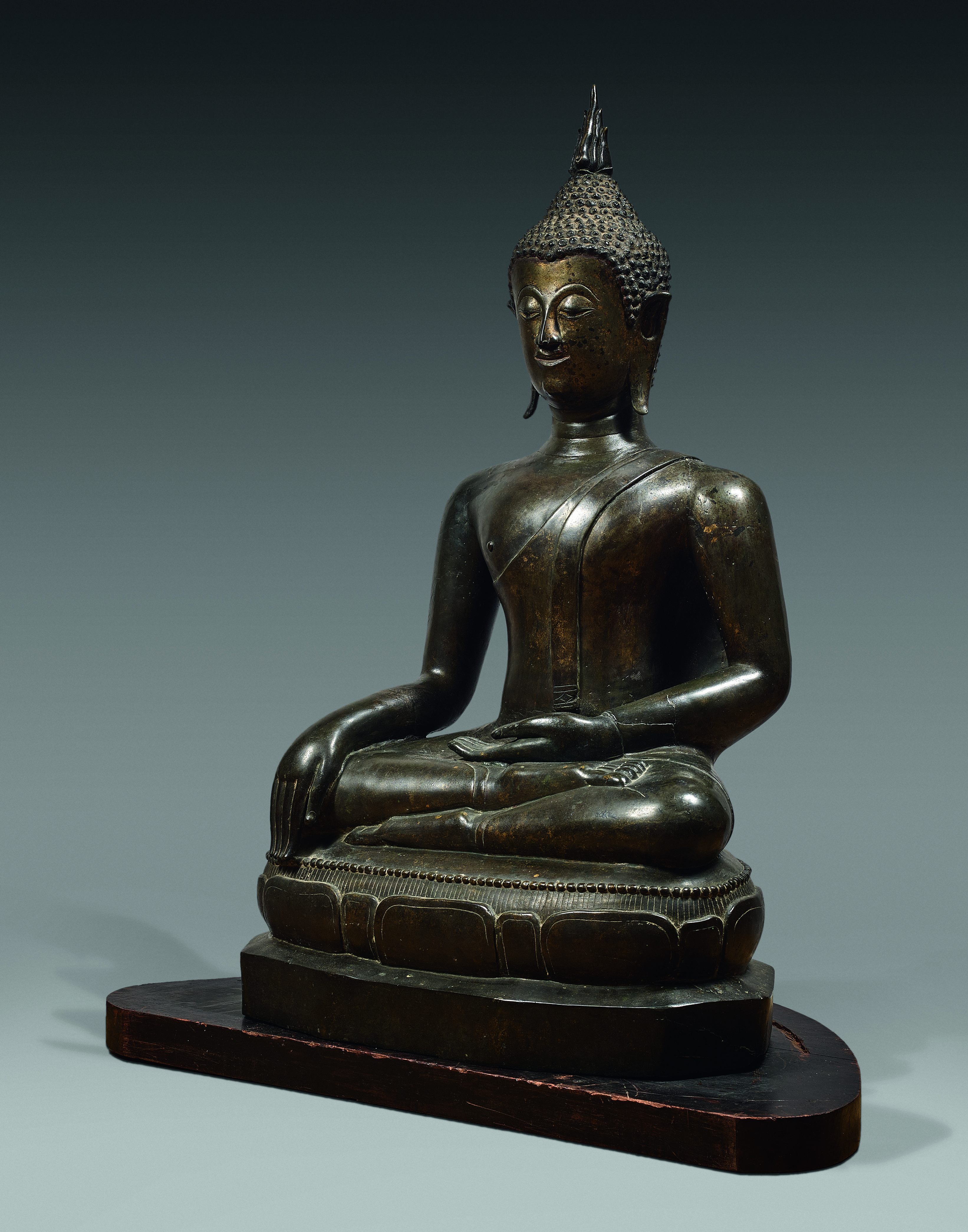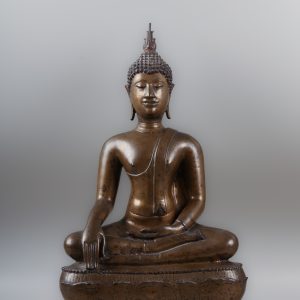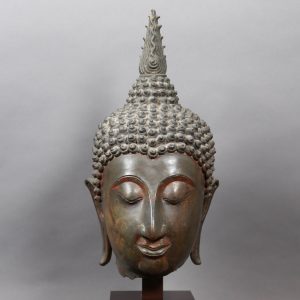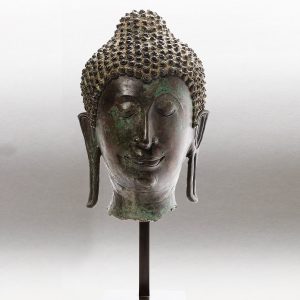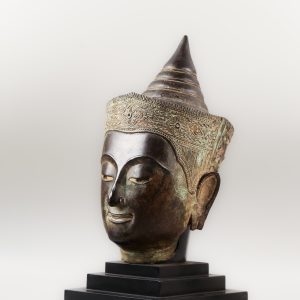Ayutthaya seated Buddha
38 000,00€
Bronze
Thailand
17th century. Ayutthaya Kingdom (1350-1767).
H. 88 cm or 34 ¾ in
Description
In 1350, prince U-Thong founded Ayutthaya, took the name of Ramathibodi I and unified Thailand, then called Siam. Ayutthaya remained the capital until it was taken by the Burmese in 1767.
Here Sākyamuni is depicted just before his Awakening. In Gāya, Bihār, in a place called bodhimaṇḍa, where the Buddhas of past cosmic eras experienced their Enlightenment, the future Awakened One sat under a bodhi tree (Ficus religiosa). Māra (“Death”), the god of desires never satisfied, and which drive the endless cycle of rebirth, felt his world threatened by the discovery of a means of salvation that could be taught to creatures. He tried by various means to tempt the Awakened One and take over the Seat of Enlightenment for himself. Śākyamuni called the Earth as witness of his good faith to teach all beings the way to their release. This fundamental iconography is found throughout the Buddhist world.
Śākyamuni is seated in the so-called “noble” pose (sattvaparyaṅka), right leg folded under left leg, the sole of only one foot visible. In countries where esoteric and Mahāyāna Buddhism flourish, there is a preference for depicting The Awakened One in the lotus pose (padmāsana) or the diamond pose (vajrāsana or vajraparyaṅka). His right hand down, palm turned inward, he touches the ground with the tips of his fingers. “Calling the Earth as witness” (bhūmisparśa mudrā) is one of the six canonical gestures (mudrā) made by Buddha during the major events of his life.
Of the various trends observed in Ayutthaya statuary, a tendency toward a certain eclecticism dominates a large share of statues produced. The face partially perpetuates Sukhothai aesthetics but the geometrically rendered body is reminiscent of U-Thong statuary. The extremely arched eyebrows and excessively stylized ears are details frequently found in the statuary of Laos. This piece may well have been cast in the north of the Ayutthaya Kingdom.
The eyes were once decorated with mother-of-pearl, which would have given them an almost hypnotic presence in the dim lighting of the sanctuary. The hair retains traces of black lacquer that was once gilded.
Provenance : Private collection, Turin, acquired in Bangkok, 1973.
Art Loss Register Certificate, ref. S00115345.
- Giteau Madeleine, Art et archéologie du Laos, Paris, Ed. Picard, 2001, p. 155, fig. 115.

